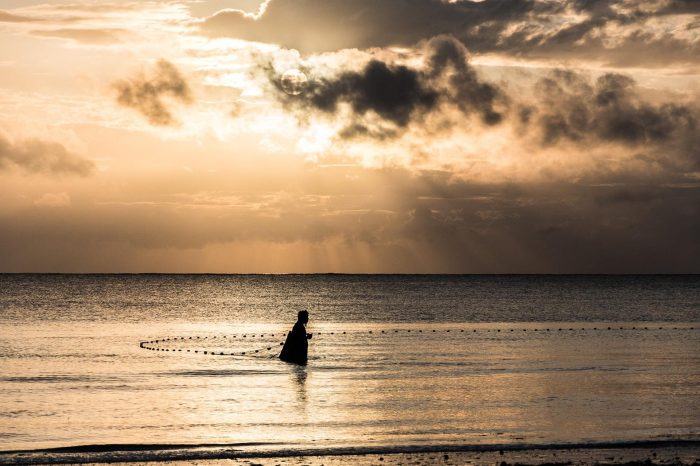How to Install a Fishfinder

A fish finder is an excellent tool when you’re on an expedition. However, if you don’t install it properly, it can become cumbersome. You should make sure the fish finder is in a place that is easy to read, and easy to access. There are some things you may not have considered when you’re trying to install a Fishfinder.
Such things include placement, how the wires are going to run, and other factors. While it may seem that installing a fish finder is easy, there are many mistakes people make when they install a Fishfinder. This tutorial will show you how to install a Fishfinder to make it an efficient tool for you.
What You Will Need to Follow this Tutorial
If you’re trying to install your fish finder, you need to make sure you have the right tools with you. Starting a new project can be hindered when you don’t have everything you need. It’s a good idea to run through this checklist to make sure you have all the tools. If you need to borrow some tools, most hardware stores will loan them out. While most of the tools may be found in your home, you may need to run out and get them. Here is what you need to before you start working on installing your fish finder.
- Phillips head screwdriver
- Wire fish
- Wire stripper
- Wire crimper
- Fishing rods
- 3M 5200 Adhesive
- Adhesive-lined heat shrink tubing
- Cable ties
- Mounting hardware
- Silicon sealant
- Clamshell fitting
- Terminal connectors
- Crimped barrel connectors (if applicable)
How to Install a Fishfinder - Step by Step Instructions
Step 1: Register the Fish Finder
Before you can start working on your boat, you want to make sure your fish finder is registered. The fish finder’s manufacturer will have you put your email into their system, which helps them reach you. If you have any issues with your fish finder, you can contact the manufacturer, and they can guide you through the process to get your fish finder back on track. They will give you updates and alerts to make sure your fish finder is ready to go. This way, you’ll have every update you’ll need for your fish finder. It’ll always be ready to go when you are.
Step 2: Update the Fish Finder Software
The fish finder will require you to update the software when you take it out of the box. The software should be updated immediately when you take it out of the box. There are some fish finders that include micro SD slots, which allow you to increase the memory, and store more pictures. You may need to format the SD card before you can use it. Taking the steps to update the fish finder allows you to use it right away, instead of having to wait. It’s better to complete these two steps before installing the fish finder. Otherwise, you’ll have to keep the mount attached, which can be quite annoying when you’re updating the software.
Step 3: Find the Right Spot
When you’re looking at your boat, you want to consider where you’re going to put the mount. You should make sure the fish finder is close to the helm of the boat, and is easy to see. You want to make sure it has the right angle for you, and typically a fish finder should be placed between your waist and shoulder height. Putting the fish finder in the right spot makes it easier to use, reduces eye strain, and allows you to focus on driving while keeping an eye on the fish finder.
Step 4: Locate the Power Source
Depending on what your power source is, you want to make sure the wires will reach the power source. You may attach it directly to a battery, which is the best and safest way to hook up your wires. You want to make sure the wires will reach easily, but not leave too much slack. If you need to shorten or lengthen the wires, you can do that part after you’ve drilled the holes. Once you know where you put your fish finder, and where the power source is, it will be easier to install the fish finder.
Step 5: Drill Your Spot for the Mount and Wires
Once you know where you’re going to put the fish finder, you want to start drilling for the mount and wires. You want to power the drill at full speed, so it doesn’t catch on any of the edges and cause splinters. An entry and exit point should be made for the unit’s wires. You can see if there is a previous hole where a fish finder used to be, and use that. If you need to drill a new spot, you will need to drill a hole behind the binnacle mount. You want to make sure hole is big enough to let the wires go through. You can put the binnacle and fish finder in the spots to see if they will work.
Step 6: Add Sealant
You should add sealant around the holes you’ve made before mounting the fish finder, and winding the wires through. You won’t need to add too much sealant, but adding it will help keep everything in place. After you’ve added the sealant to the holes, you should apply it to the bolts that are going to be holding your fish finder mount. This creates a tougher bond, and prevents the fish finder from being knocked around. When you’re in the open water, the last thing you need is for your fish finder to fall off the mount.
Step 7: Run the Power Leads
When you’re running the power leads through the holes, you want to see if you need to lengthen or shorten the wires. If you need the extra length, you want to make sure the wires are the same color, and follow the recommended gauges. You should use crimped barrel connectors to connect the wires if you need to lengthen them. The manufacturer’s in-line fuse should remain intact, and you don’t need to worry about it getting in your way. Once you’ve drilled the exit hole, the wires should run to the power source. The wires should attach to the fish finder, which you can leave off for the time being. You want to make sure the wires are wrapped with the ties, roughly 18 apart, and without any slack.
Step 8: Place the Wires for the Transducer
The transducer is what tells you what’s on the display of the fish finder. The transducer should be placed in the deepest part of the boat, and anything that can disturb the water should be considered. You want to hold the transducer mount against the transom, and run the wires to the dash. You can make marks where the mount should go, and install the wire. Don’t cut the wire, and don’t mix up the transducer wire with the engines wiring harness.
Step 9: Install the Transducer
After you’ve put the wire through the boat for the transducer, you can then install the transducer. Hook the transducer up to the wires, and find your markings for the transducer mount. Add some sealant, and be generous when you’re applying it. You want to create a thick seal so that water doesn’t get into the boat through the holes you’ve drilled. Tighten the bolts, and your transducer should be ready to go.
Step 10: Hook Up the System
You can go up to the top of the boat where you’re going to put your fish finder. Make sure the battery is turned off before you take the wires and hook them up, and power on your fish finder. You may need to seal off the wiring hole behind the binnacle mount, and you can use the silicon sealant. After you’ve completely hooked up the wires on the fish finder, you want to make sure you’re getting power.
If the fish finder doesn’t power on, you need to go through and make sure the wires are connected properly. If it turns on without a problem, you can adjust the settings to read the transducer. You should make sure the sealant is completely dry before you decide to take the boat out on the water. This way, your fish finder doesn’t cause your boat to sink. You can monitor the sealant to ensure it is completely intact. If you don’t notice any leaks after a week, you’ll be good to go!
We like to share product recommendations with you and hope you like them! Just to make you aware FishingLab may collect a small share of sales or other compensation from the links on this page.







